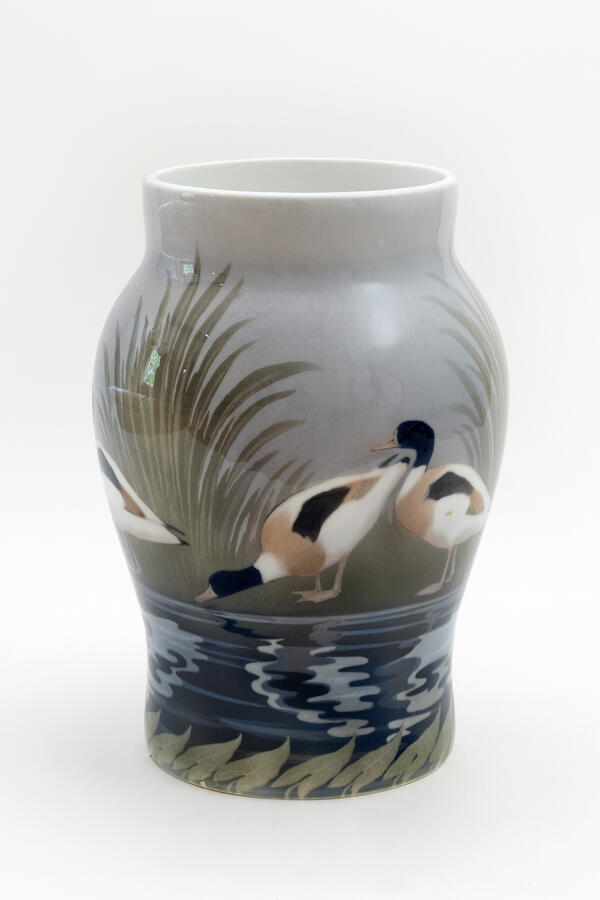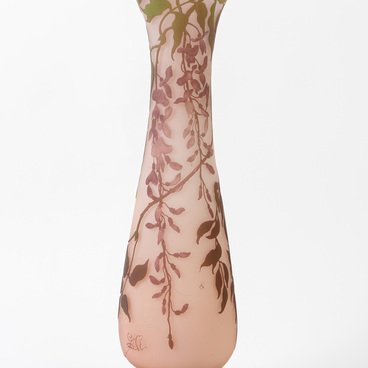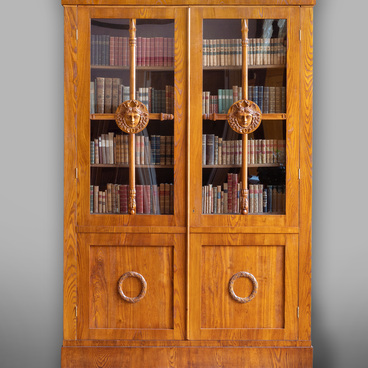The vase with the image of ducks from the Mauve Room of the Alexander Palace was painted by the talented artist Vilhelm Theodor Fischer (1857–1928). The work was executed in 1909, as the artist’s signature and the letter Z with the number 10 indicate. It is a coded date of producing a unique item, meaning that it is the only one of its kind. The body of the vase is round, flaring upwards, with a low, straight neck. It is decorated with a panoramic painting of ducks surrounded by riverside and aquatic plants. This method of placing an image on the surface of objects is very characteristic of the Art Nouveau period. The Art Nouveau style is marked by moving away from strict geometric shapes and lines and striving for nature and natural beauty as the main source of inspiration for art.
The author of the painted work, Vilhelm Theodor Fischer, studied at the Royal Danish Academy of Arts in Copenhagen. In 1884, he began work at the Royal Porcelain Manufactory. This artist is known to be a master of decorative designs, as well as animal and plant motifs. He participated in numerous art exhibitions.
The vase on display was created at the Royal Porcelain Manufactory in Copenhagen. The Factory was founded in 1755 and its first director was a German ceramist Johann Gottlieb Mehlhorn. However, the manufactory became most renowned a little more than a century later. The rise of creative activity in the manufacture was connected with the arrival of Arnold Emil Krogh as an artistic director in 1885. He became the founder of a new decorative style and brought up a whole generation of talented artists such as Christian Thomsen, Vilhelm Theodor Fischer, Gottfred Rohde and others. The manufactory was famous for its products in the technique of underglaze painting — they were very popular in the late 19th — early 20th centuries. The essence of the technique was in the firing at high temperatures, which resulted in slightly blurred compositions in pastel, soft colors with the predominance of green, blue, pink and gray.
The author of the painted work, Vilhelm Theodor Fischer, studied at the Royal Danish Academy of Arts in Copenhagen. In 1884, he began work at the Royal Porcelain Manufactory. This artist is known to be a master of decorative designs, as well as animal and plant motifs. He participated in numerous art exhibitions.
The vase on display was created at the Royal Porcelain Manufactory in Copenhagen. The Factory was founded in 1755 and its first director was a German ceramist Johann Gottlieb Mehlhorn. However, the manufactory became most renowned a little more than a century later. The rise of creative activity in the manufacture was connected with the arrival of Arnold Emil Krogh as an artistic director in 1885. He became the founder of a new decorative style and brought up a whole generation of talented artists such as Christian Thomsen, Vilhelm Theodor Fischer, Gottfred Rohde and others. The manufactory was famous for its products in the technique of underglaze painting — they were very popular in the late 19th — early 20th centuries. The essence of the technique was in the firing at high temperatures, which resulted in slightly blurred compositions in pastel, soft colors with the predominance of green, blue, pink and gray.



